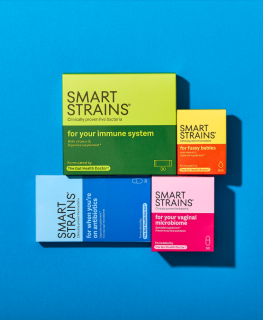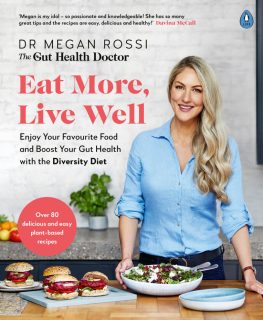If you frequently find yourself subject to nasty gut symptoms after eating, from bloating and wind to tummy pain and loose poops, then you may well have turned to Dr Google. Here, you might have quickly been presented with a list of possible food intolerances as being key to your digestive woes: and advice that you cut out gluten, lactose or wheat, to take some classic examples.
No doubt, when symptoms are putting a strain on your social life or your confidence, it’s natural to want to try out something that might help, stat. But if you do suspect that you have a food intolerance, it’s important that you have this confirmed, and don’t go with a hunch/ guidance thrown up on the Internet.
Why? Firstly, because this could lead to you swerving certain gut-loving foods, like whole grains, needlessly. Secondly, because your symptoms may have nothing to do with food, at all. Yep, it’s also possible that Irritable Bowel Syndrome (IBS) is the root cause of your pains. If that’s the case, then gut lining sensitivity, rather than semi-skimmed, tagliatelle or sourdough, is your problem.
Okay, so how do you crack the code on your symptoms? Annoyingly, the reality is that those tests that clog up the ads on your Instagram stories do not have solid evidence to back up their efficacy and are simply not valid. Trust me I wish they were, it certainly would make my job much easier. (The single exception is lactose intolerance tests.)
Rather, the evidence-based way we work out if someone has a food intolerance in clinical practice is something I call the ‘3R Method.’ I’ve sketched out the bones of how it works, here:
- Record (you complete a 1-2 week gut diary, in which you write down everything you eat and drink, record any symptoms and record other events, such as exercise, bed and wake time and stress levels.)
- Restrict (after identifying suspected culprit food, you move into a period of restricting it. How long this takes depends on how your symptoms go.)
- Reintroduce (you re-introduce the food, to confirm it was causing your symptoms.)
To get the complete step-by-step plan of how you go about this safely – and in a way that yields accurate results – head to pages 110-135 of my first book, Eat Yourself Healthy (called ‘Love Your Gut’ in US and Canada). Please also note that if you have a history of disordered eating, it’s important that you seek support from a dietitian before you think about trying this method.
For sure, this can feel like a hassle. But getting a handle on the genuine cause of your symptoms is essential, when it comes to being your healthiest, happiest self. You’ve got this!
How are food intolerances different to a food allergy?
Food allergies involve the immune system and essentially happens when the body mistakes certain food proteins for a harmful substance. This triggers the body’s defence system, generally leading to more serious symptoms than a food intolerance would, including trouble breathing, a racing heart rate, skin rashes, and digestive problems. It’s estimated that food allergies affect around 1-2% of adults, so they’re less common than intolerances which affect as many as 1 in 5 people. A food allergy needs to be diagnosed with a qualified allergist or immunologist (medical doctors who specialise in allergies).
The most common food allergens are cow’s milk, egg, wheat, soy, nuts, seeds and fish – but most people grow out of food allergies after early childhood. For adults, the most common form of food allergy is pollen food syndrome (PFS) as I mentioned in yesterday’s post – although it’s not typically life- threatening and many don’t even realise they have it. In most cases, the symptoms are immediate and include mild itching or tingling of the tongue and
lips. Foods most likely to trigger symptoms include apples, kiwi, peaches, plums and strawberries, as well as carrots and nuts (Brazil, walnuts, hazelnuts and almonds). Eating these foods cooked or tinned could help to improve tolerance, as the heat and processing makes the protein molecules inactive.
Click here for more on pollen food syndrome.














